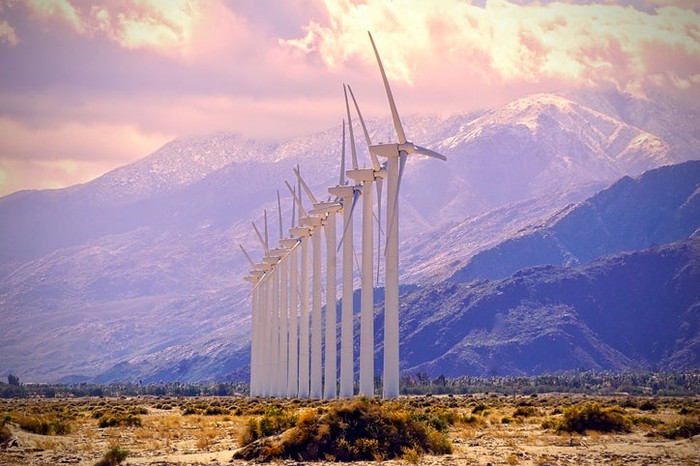U.S. Coal-Fired Power Plants Just Had Their Worst Year Since the 1970s

By Maxx Chatsko
March 1, 2020 - In 2007, the U.S. generated a record amount of electricity from coal-fired power plants at an estimated 2,016 terawatt-hours, according to data compiled by the U.S. Energy Information Administration (EIA). Last year, the nation's fleet generated an estimated 966 terawatt-hours. That's less than half the all-time peak from just 12 years ago and the lowest output since the late 1970s.
The overnight abandonment of coal-fired power plants has created an opportunity for other power sources to gain market share while decarbonizing the country's power sector. In 2019, the United States generated record amounts of electricity from each natural gas, nuclear, wind, and solar.
Here's what the latest numbers from the country's ongoing energy transition mean for investors.
.jpg)
Image: Getty
By the Numbers
The sudden collapse of coal-fired electricity production is unprecedented. No energy source (including power, heating, and transportation) has experienced a 50% decline in output in a 12-year period dating back to the country's founding in 1776, according to the EIA.
Power generators are turning away from coal assets primarily due to economic factors. Coal-fired power plants have become more expensive to fuel and maintain than newer natural gas-fired power plants in much of the country. Onshore wind farms in the Midwest and West Texas have also forced many coal-fired power plants into an early retirement.
A comparison of the nation's power mix in 2007 and 2019 clearly shows a transition to less expensive, lower-carbon energy sources. The numbers are even more impressive considering total electricity consumption has changed by less than 1% in that span, which makes each power source's changing share a direct reflection of changing electrical output.
.png)
The transition away from coal is expected to continue. Here are a few other highlights from the latest numbers compiled by the EIA:
- Just two years ago, the EIA estimated coal-fired power plants would supply 22% of the nation's electricity in 2050. That now appears to be a gross overestimate (although it appeared that way at the time, too).
- Due to closures and low utilization, it seems likely that July 2019 will be the last month ever that the U.S. generated more than 100 terawatt-hours of electricity from coal.
- The U.S. leaned on renewable energy sources for 17.5% of its total electricity consumption in 2019. Zero-carbon electricity sources had a 37.1% share of the power mix last year.
- Nuclear power plants generated an estimated 809 terawatt-hours of electricity in 2019, which was an all-time high. The nation's fleet accomplished the feat through improvements called uprates, which add capacity to existing assets. The trend is not expected to continue in face of reactor closures in the next several years, although nuclear power outproduced coal for the first time ever in April 2019. It did it again in December 2019.
- An estimated 10,000 megawatts of onshore wind power came on line in 2019, including 3,800 megawatts in the fourth quarter. Those assets will contribute their first full year of production in 2020, which will significantly increase the share of electricity generated from wind power this year.
- A record amount of wind capacity is expected to come on line in 2020, meaning wind power's share of the generation mix will increase further in 2021. The EIA had previously expected 14,300 megawatts to come on line in 2020, but a large share of projects expected to be completed last year were pushed into this year after a federal subsidy was extended. That could make 2020 a fantastic year for capacity additions.
- Utility-scale solar assets generated an estimated 72 terawatt-hours of electricity in 2019, but small-scale solar installations (rooftop and commercial assets) generated an additional 35 terawatt-hours. The EIA currently excludes small-scale generation from power mix calculations. When included, solar accounted for 2.6% of all electricity consumption in the U.S. in 2019.
What it Means for Investors
The latest numbers contain two major takeaways for investors.
First, power generators are rapidly reducing their exposure to coal assets. That doesn't bode well for coal producers such as Alliance Resource Partners (NASDAQ:ARLP). Investors might be drawn to the stock for its eye-popping distribution yield of 22.8%, but the reality is the stock has been a downright terrible investment. With dividends included, the stock has lost 61% in the last year, lost 70% in the last five years, and lost 26% in the last 10 years.
Alliance Resource Partners has invested in oil and gas assets to decrease its reliance on coal, but coal assets were responsible for 95% of total revenue in 2019. Considering the EIA expects the share of electricity generated from coal-fired power plants to fall to 21% in 2020 and for coal production to slip 14% year over year, investors cannot be very confident in the business.
Second, power generators are increasingly relying on natural gas and renewable energy. Utilities in the mid-Atlantic and Southeast have relatively poor access to onshore wind resources, which makes them more dependent on natural gas-fired power plants.
Dominion Energy (NYSE:D) generates 55% of its income from electric utility operations in Virginia, North Carolina, and South Carolina, but a lack of wind resources hasn't stopped its decarbonization efforts. The proportion of electricity generation from coal-fired power plants has fallen from 52% of the company's total output in 2005 to just 12% in 2019.
The business is positioning itself to continue benefiting from the energy transition. Natural gas distribution, transmission, and storage operations will be responsible for roughly 40% of earnings in 2020. Meanwhile, solar assets spread across the U.S. are expected to contribute at least 5% of earnings this year and grow in the future. More impressive, Dominion Energy expects to achieve net zero carbon dioxide and methane emissions across its electricity and gas operations by 2050.

Image: Getty
Other companies aren't nearly as constrained by geography. NextEra Energy (NYSE:NEE) has ambitious plans to build record amounts of onshore wind and utility-scale solar capacity across the U.S. through its power generation subsidiary NextEra Energy Resources (NEER). The subsidiary was responsible for 48% of the parent company's total net income in 2019. The company thinks the U.S. could generate between 30% and 40% of its electricity from renewable energy by 2030. It's by far the most optimistic projection published, but the business has been right for the last 20 years and presumably has the best insight into the trend thanks to NEER.
Xcel Energy (NASDAQ:XEL) will bring 1,922 megawatts of onshore wind capacity on line in 2020. Including both owned and contracted assets, the company expects to lean on 11,000 megawatts of wind capacity by the end of 2021. That will make up roughly 10% of the nation's total installed wind power capacity that year.
It's part of the company's "steel for fuel" program that replaces coal-fired generation (the fuel) with wind farms (the steel). The benefits to ratepayers and shareholders have been impressive. The share of an average customer bill dedicated to fuel expenses is expected to fall from 47% in 2010 to just 28% by 2024. That frees up more capital to invest in growth, which can help Xcel Energy grow both earnings and dividend per-share payouts 5% to 7% per year for the foreseeable future.
Is Your Portfolio Benefiting From the Energy Transition?
The latest numbers from the EIA show that coal-fired power plants continue to fall out of favor in the country's electrical grid. The driving force is economics. Natural gas and onshore wind power are simply lower-cost power sources in a growing number of markets. That trend shouldn't reverse itself anytime soon.
In fact, costs for onshore wind and utility-scale solar (and batteries) are projected to continue falling in the next five years, even when phased-out federal subsidies are included in the calculations. In other words, if your portfolio isn't positioned to benefit from the ongoing energy transition, it's not too late.

